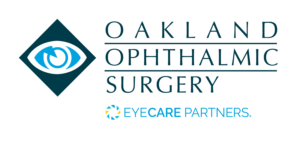Posted by: Oakland Ophthalmic Surgery in Cataract Surgery
What are Cataract Symptoms?

What are Cataracts?
Cataracts are a common eye condition affecting millions of people worldwide. As we age, the likelihood of developing cataracts grows, making it essential to understand the early signs and symptoms.
Symptoms of Cataracts
Our eyes are normally clear, but when affected by cataracts, the lens of the eye is clouded. This clouding can appear in various symptoms that typically develop slowly and differ in severity. Understanding these symptoms is vital when deciding whether to schedule an appointment with your eye doctor. The main symptoms of cataracts include:
Cloudy or Blurry Vision
One of the earliest and most prominent signs of cataracts is a gradual decrease in vision clarity, most commonly manifesting as cloudy or blurry vision. The early effects may be mild, making it challenging to see fine details or read small print but not significantly impacting your overall vision. Over time this blurriness can intensify, making everyday activities increasingly difficult.
Problems with Night Vision
Cataracts can significantly impact your night vision, especially when driving. You may notice a heightened glare from oncoming headlights or become more easily disoriented by bright lights in dark environments. This is due to the scattering of light caused by the clouded lens in your eye, leading to discomfort and making night-time activities such as driving, more dangerous.
Glare and Light Sensitivity
Photophobia, or an increased sensitivity to bright lights and glare, is a common symptom of cataracts. Exposure to bright sunlight, headlights, or intense indoor lighting can be uncomfortable, leading to squinting and shielding eyes. This sensitivity, while seemingly innocuous, can be a major inconvenience and can impact your daily routine.
Halos Around Lights
When you have cataracts, the clouding on the lens can cause the light that enters the eye to scatter in different directions, leading to the perception of halos or rings around light sources. Halos are particularly noticeable in low-light settings. For example, streetlights or car headlights at night may seem to be surrounded by circles of light, which can be disorienting and potentially dangerous.
Double Vision
People with cataracts often experience double vision, where a single object appears as two overlapping images. While closing one eye can temporarily fix this issue, it doesn’t address the underlying condition. Consistent double vision can lead to additional complications such as headaches, that can impact your daily activities.






What to Expect from Cataract Surgery
Cataract surgery may seem daunting, but it is a standard and safe procedure. The surgery is estimated to be performed 20 million times annually, making it one of the most frequently performed surgeries worldwide. As you prepare for cataract surgery, here’s what you can expect during the process:
- A small incision is made. The main goal of the surgery is to remove the cloudy natural lens affected by the cataract through a precise incision. This incision is small enough that it often requires no stitches and heals quickly on its own.
- The affected lens is replaced. Once the clouded lens is removed, it is replaced with a new, clear artificial lens known as an intraocular lens (IOL). The IOL is designed to restore clarity to your vision and is a permanent part of your eye.
- The procedure is efficient and painless. One of the most remarkable aspects of cataract surgery is its efficiency. The entire procedure typically takes about 10 minutes to complete and is normally performed under local anesthesia, so you won’t feel any pain.
You should carefully follow your surgeon’s instructions post-surgery to ensure the best possible outcome. Most patients can return to their normal activities one or two days after the surgery with clearer vision. To learn more about the procedure and how to prepare, visit our Cataract Surgery Treatment page.
Cataract Surgery Recovery
After the procedure, most patients found that they could return to their daily routines with proper attention to avoiding various eye strains. This can be done through utilizing eye drops to prevent infection and inflammation, wearing protective eyewear, or avoiding certain activities that can increase strain to your eyes.
Patients are often given a gap of a few weeks between surgeries because only one eye is operated on at a time. This approach gives the first eye ample time to heal before the second procedure and ensures that you have a smoother, more comfortable recovery. This method will allow you to maintain some level of normalcy in your vision during the recovery process.
Financing Cataract Surgery
At Oakland Ophthalmic Surgery, we understand that cataract surgery is a significant investment, which is why we strive to make it accessible and affordable to all patients. Vision accepts Health Savings Accounts (HSAs) and Flexible Spending Accounts (FSAs), allowing you to use pre-tax dollars to pay for your cataract surgery. Cataract surgery is recognized as a qualified healthcare expense, meaning that any costs associated with the procedure can be covered using your HSA or FSA funds.
If you’re exploring other financing and payment options, we’re here to help. To learn more about our options, visit our insurance page or contact your local Oakland Ophthalmic Surgery location.
